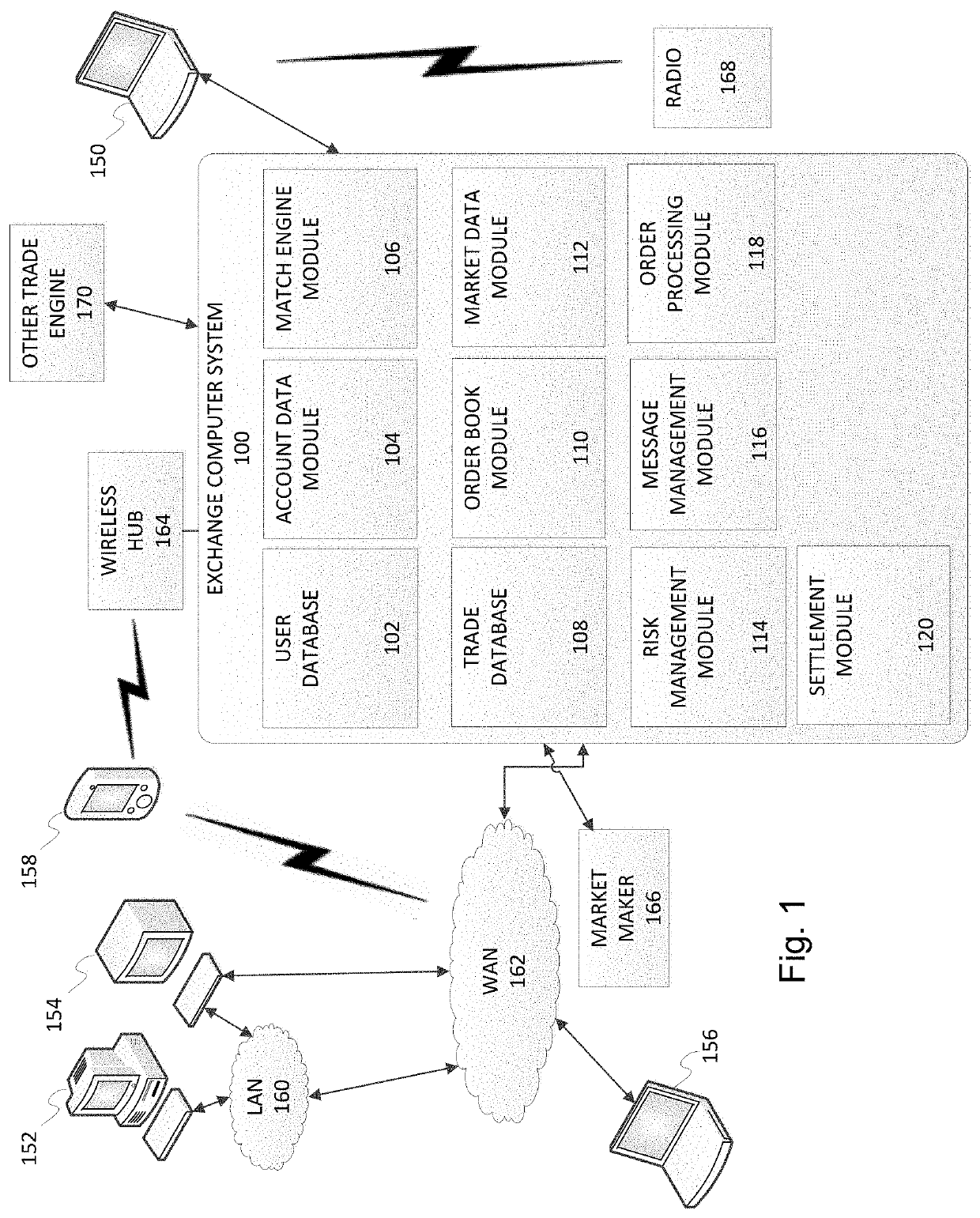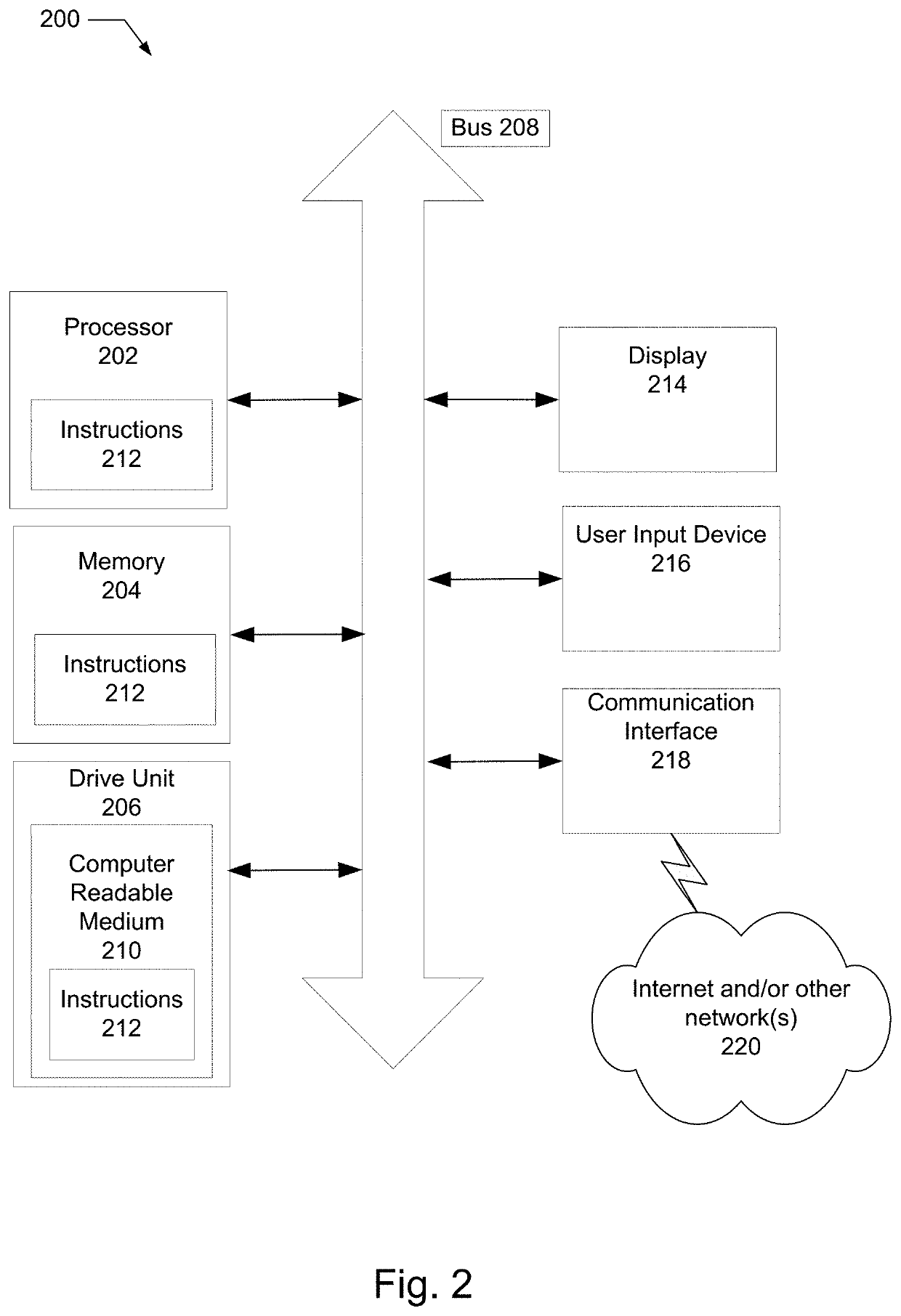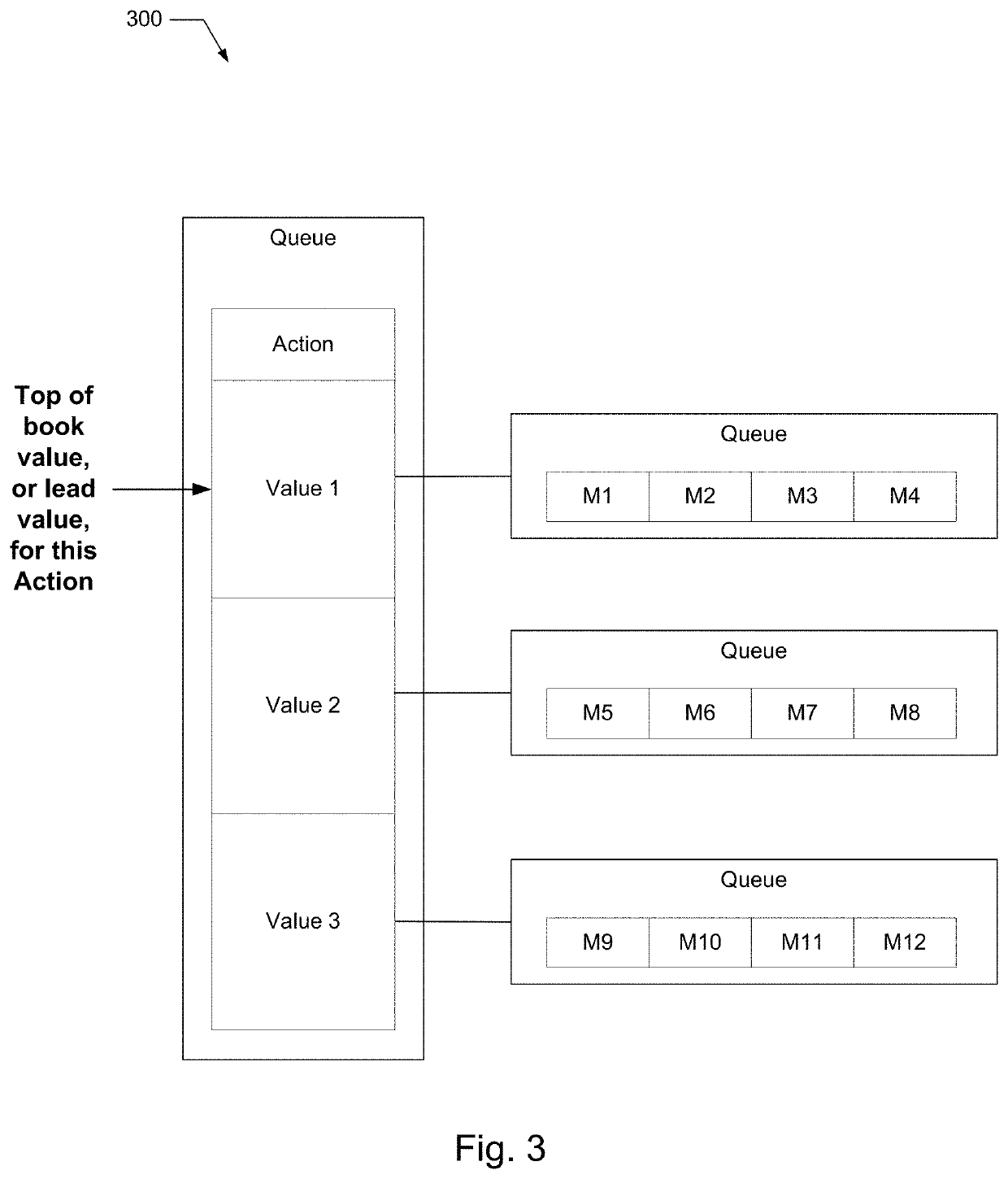However, streaming platform architectures such as Kafka cannot guarantee that data / messages read across multiple partitions by a
consumer are ordered in the same order or sequence in which the messages were transmitted by the producers to the streaming platform.
At least some of the problems solved by the disclosed embodiments are specifically rooted in technology, where streaming platform partitions are a common architectural standard useful for their
failover /
scalability features, but result in ordering problems across multiple partitions, and are solved by the disclosed streaming platform reader that implements the vector
gate control logic to impose an additional wait time on already retrieved / available / downloaded messages to ensure ordering across multiple partitions.
In addition, it may be appreciated that
electronic trading systems further impose additional expectations and demands by market participants as to
transaction processing speed, latency, capacity and
response time, while creating additional complexities relating thereto.
In those markets, the failure of one participant can have a
ripple effect on the solvency of the other participants.
Conversely, CME's mark-to-the-market
system does not allow losses to accumulate over time or allow a
market participant the opportunity to defer losses associated with market positions.
As an intermediary to
electronic trading transactions, the exchange bears a certain amount of risk in each transaction that takes place.
This may result in penalizing the trader who makes an errant trade, or whose underlying trading motivations have changed, and who cannot otherwise modify or cancel their order faster than other traders can submit trades there against.
Furthermore, while it may be beneficial to give priority to a trader who is first to place an order at a given price because that trader is, in effect, taking a risk, the longer that the trader's order rests, the less beneficial it may be.
However, a trader who took a risk by being first to place an order (a “market turning” order) at a price may end up having to share an incoming order with a much later submitted order.
This results in an escalation of quantities on the order book and exposes a trader to a risk that someone may trade against one of these orders and subject the trader to a larger trade than they intended.
In the typical case, once an incoming order is allocated against these large resting orders, the traders subsequently cancel the remaining resting quantity which may frustrate other traders.
If any one of the queues or components of the
transaction processing system experiences a
delay, that creates a backlog for the structures preceding the delayed structure.
For example, if the match or transaction component is undergoing a high
processing volume, and if the pre-match or pre-transaction
queue is full of messages waiting to enter the match or transaction component, the conversion component may not be able to add any more messages to the pre-match or pre-transaction queue.
However, streaming platform architectures such as Kafka cannot guarantee that data / messages read across multiple partitions by a
consumer are ordered in the same order or sequence in which the messages were transmitted by the producers to the streaming platform 514, or in the same order in which the messages were received by the streaming platform 514.
However, some consumers may consume more than one of the topics, requiring that
consumer to read multiple partitions.
However, each reader thread may still cause the executing processor to perform a
context switch, i.e. the process of storing the state of a process or of a thread, so that it can be restored and execution resumed from the same point later, which may unnecessarily increase processing loads.
Furthermore, in implementations where each reader thread further post-processes the message content, such post processing may slow down that thread.
Accordingly, under high asymmetric message loads, bottlenecks may be created where a few of the reader threads are bogged down processing messages while other reader threads sit idle, potentially causing unnecessary context switching.
This may result in most threads being idle while the active threads are backed up /
bottle necked with decrypting / decoding the
heavy traffic.
The large number of threads, idle or otherwise, also may cause a significant amount of context switching overhead (a
context switch is the process of storing the state of a process or of a thread, so that it can be restored and execution resumed from the same point later).
Additionally, the illustrations are merely representational and may not be drawn to scale.
 Login to View More
Login to View More  Login to View More
Login to View More 


